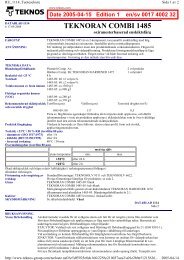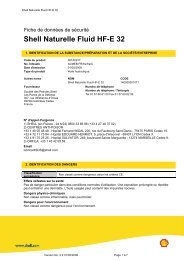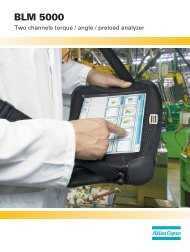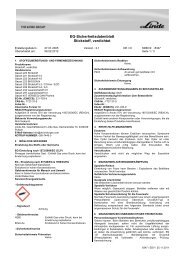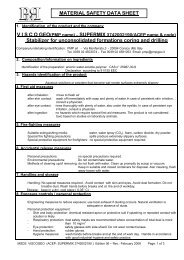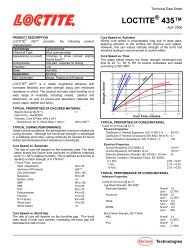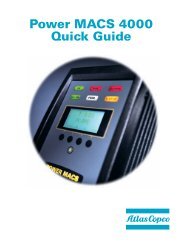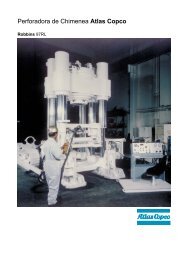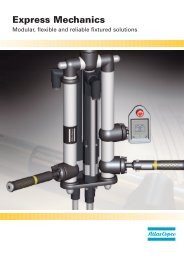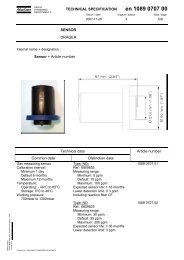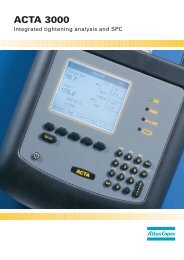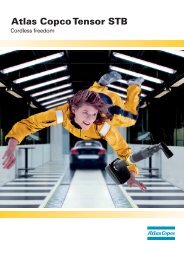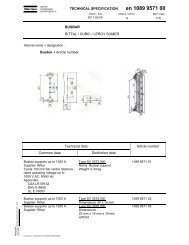Ergonomics - Atlas Copco
Ergonomics - Atlas Copco
Ergonomics - Atlas Copco
Create successful ePaper yourself
Turn your PDF publications into a flip-book with our unique Google optimized e-Paper software.
78<br />
the object, the shape of the object’s cross-<br />
section and the type of grip. For power<br />
gripping an object with a round cross-section<br />
and an optimal diameter (about 38 mm for<br />
males and 34 mm for females), the maximal<br />
gripping force capacity is, on average, 500 N<br />
for men and 350 N for women, respectively.<br />
Considering the tendency of the hand<br />
to slip on the handle of a tool, these force<br />
limits, combined with the size and surface<br />
condition of the handle, can be used to<br />
determine the maximal thrust force and<br />
rotational torque for a cylindrical tool, e.g.,<br />
a straight screwdriver.<br />
The maximal thrust force that can be gen-<br />
erated using the maximal gripping force can<br />
be calculated using the following formula:<br />
Maximal thrust force =<br />
Maximal gripping force · µ<br />
Where µ is the coefficient of friction<br />
which ranges from 0.10 to 2.22, depend-<br />
ing on the texture of the handle’s surface,<br />
material properties, environmental condi-<br />
tions such as temperature and lubrication.<br />
Depending on the coefficient of friction,<br />
the maximal thrust force varies from 50 to<br />
1,100 N for men (maximal gripping force<br />
500 N), and 35 to 750 N for women (maxi-<br />
mal gripping force 350 N). These figures can<br />
be compared with the maximal ulnar push-<br />
down force force (75 N for men and 50 N for<br />
women in sitting work) given in Table 3.2.<br />
In most handle designs (handle friction), the<br />
forces from the hand-arm system are the<br />
limiting factors, and not the grip itself.<br />
In the same way, variation in the maxi-<br />
mal rotational torque can be calculated using<br />
the variation in the friction coefficient.<br />
Triggering<br />
Several types of trigger are available. The<br />
most common are the finger trigger, the<br />
lever trigger and the thumb trigger. To<br />
evaluate the finger trigger it is necessary<br />
to know which finger or fingers are used. If<br />
one finger is used, use the MVC capacity for<br />
that finger. If several fingers are used, for<br />
example on a level trigger, add the MVC for<br />
the respective fingers together.<br />
When a lever trigger is operated with<br />
the palm of the hand, such as on a standard<br />
grinding machine, the feed force and the trig-<br />
ger force are applied in the same direction.<br />
However, trigger forces exceeding 30% of the<br />
average feed force are not recommended. The<br />
same general rule applies to thumb triggers<br />
Sitting postures Men Women<br />
Grip force 500 350<br />
Table 3.4 Maximal Voluntary Contraction<br />
values for grip force.



